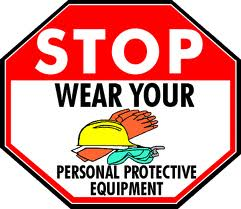Many construction professionals still believe that safety and productivity are in conflict. When that mindset shows up on a site, safety can slip quickly once production pressure rises. This research topic explores whether safety and productivity can be achieved together, and how students can design a study to prove or disprove the idea using real construction firm data.
Why this topic matters
- Practical value: Owners and contractors want projects that are safe, on time, and on budget. Evidence that safety and productivity reinforce each other can shift industry practice.
- Academic value: There is room for empirical work combining safety science, productivity measurement, and organizational behavior in construction contexts.
- Policy and training: Robust findings can inform incentive systems, contracting approaches, and workforce training.
Core research questions
- Do projects with strong safety performance also show better productivity, cost, schedule, and quality outcomes?
- Which safety practices or cultural factors most strongly predict improved productivity?
- Are there tradeoffs in specific contexts, such as fast-track schedules or high-risk specialty work?
- How do organizational factors like leadership, incentive systems, and subcontractor management mediate the relationship?
What the literature review should cover
- Previous empirical studies linking safety performance metrics with productivity or schedule outcomes.
- Safety climate and culture literature and their influence on operational outcomes.
- Behavioral economics studies about incentives and risk-taking on construction sites.
- Case studies showing both positive and negative relationships between safety and production.
Data to collect
Work with construction firms to gather project-level and site-level data. Useful datasets include:
- Safety metrics: TRIR, DART, LTIF, OSHA recordables, near miss counts, safety observations, audit scores.
- Productivity metrics: earned value data, planned versus actual manhours, production rates per crew, schedule variance, cycle times.
- Cost and quality: cost variance, rework hours, punchlist items, warranty claims.
- Project context: project size, complexity, type, duration, weather events, subcontractor share of work, supply chain disruptions.
- Organizational inputs: safety training hours, toolbox talk frequency, leadership walkaround logs, incentive programs.
- Qualitative data: interviews with site managers, foremen, workers, and safety professionals; safety climate surveys; focus groups.
Study design and methods
Students can adopt a mixed methods approach. Suggested elements:
- Descriptive analysis: Summarize safety and productivity distributions across projects and sectors.
- Correlation and regression: Explore associations between safety measures and productivity outcomes. Control for confounders like project size and complexity.
- Multilevel modeling: If you have data across many sites and firms, use hierarchical models to account for clustering by firm or project type.
- Quasi-experimental designs: If a firm introduced a safety intervention, use difference-in-differences or interrupted time series to estimate effects.
- Qualitative analysis: Thematic coding of interviews to explain mechanisms and attitudes behind quantitative trends.
Key measurement tips
- Define metrics clearly. For example, productivity can be output per manhour, percent complete on schedule milestones, or earned value performance index.
- Use leading indicators as well as lagging ones. Near miss reporting and safety observations are leading indicators that may predict both incidents and production disruptions.
- Normalize measures where possible. Compare production per crew-hour rather than raw counts, to handle different crew sizes and project scales.
Analysis plan
- Start with visualizations: scatter plots, time series, box plots by project category.
- Run bivariate correlations between safety scores and productivity metrics.
- Estimate multivariate regressions that control for project characteristics, weather, contract type, and workforce composition.
- Test mediation: does safety climate mediate the relationship between leadership practices and productivity?
- Run robustness checks: subgroup analysis by project type, firm size, or region.
Practical steps for students
- Get buy-in from one or more construction firms. Offer confidentiality and actionable results in return.
- Prepare data templates and a clear data request list. Ask for data dictionaries to avoid misunderstandings.
- Combine quantitative records with interviews and site observations to build context.
- Pre-register analysis plans if possible to avoid data mining and strengthen credibility.
Ethics, confidentiality, and data quality
Protect worker privacy and firm confidentiality. Use anonymized project IDs and aggregate reporting. Check data completeness and consistency. Be transparent about limitations from missing or biased records.
Expected outcomes and implications
Potential findings include:
- Evidence that projects with better safety metrics also have fewer delays, less rework, and improved productivity.
- Identification of specific safety practices that drive positive productivity outcomes, such as pre-task planning and active safety leadership.
- Contexts where tradeoffs may exist, for example when extreme schedule compression forces shortcut behavior.
Implications for practice could include recommendations for aligning incentives, investing in leading indicators, and training supervisors to treat safety as a productivity enabler.
Limitations and future research directions
- Selection bias: firms willing to share data may already prioritize safety.
- Generalizability: results from one country or sector may not translate everywhere.
- Unobserved confounders: leadership style or local regulations could influence both safety and productivity.
Future studies could test interventions experimentally, compare contract models, or measure long-term business performance like profitability and employee turnover.
Recommended tools and resources
- Statistical software: R or Python for analysis, and mixed model packages for multilevel data.
- Qualitative tools: NVivo, MAXQDA, or simple coded spreadsheets for interview transcripts.
- Templates: safety observation checklists, near miss forms, and a productivity data template that aligns dates and crew-hours.
Final tips
Keep the study practical and grounded in real-world data. Combine solid statistics with stories from the field. Focus on clear, actionable recommendations that help firms see safety as a path to better productivity, not a roadblock.

